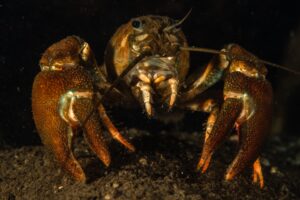Eastshore State Park, an 8.5-mile-long ribbon of East Bay shoreline between the Bay Bridge and Richmond’s Marina Bay, is proof that many good things don’t come easily. The park is the result of 20 years of advocacy, negotiation, and planning that started with a small group of devoted activists and grew to include the State Department of Parks and Recreation, the Coastal Conservancy, the East Bay Regional Park District (EBRPD), five cities, many environmental organizations, and thousands of private citizens.
Implementing the park’s general plan will take an additional 20 years. And park advocates point out that there is more work to be done to protect the bayshore north of the park and limit nearby development such as the hotel and mall complex proposed at the Golden Gate Fields racetrack site.
EBRPD, which is leading the planning, development, and management of the state-owned park, recently completed Eastshore’s first environmental enhancement project: creating a wetland habitat on 17 acres in the 72-acre Berkeley Meadow near the western end of University Avenue. In 2004, crews removed nonnative vegetation from this weed-choked landfill site, recontoured the ground to create seasonal marshes, and planted the area with native species.
In its first year, the new habitat has been an avian “field of dreams,” says EBRPD’s Brad Olson. Winter rains ponded in the new wetlands, which were heavily used by shorebirds and waterfowl. Bird-watchers reported species that they had not previously seen at the site, including the short-eared owl and Wilson’s snipe. Future plans include enhancing and restoring additional marsh and tideland habitat, daylighting the mouth of Schoolhouse Creek, expanding public trails, and building a kayak launch.
Trails through the restored Berkeley Meadow will be open to the public in the next few months, and water recreation areas of the park are already accessible to nonmotorized watercraft. This fall, the Golden Gate Audubon Society will begin leading nature walks in the park’s public areas. The nearby Albany Bulb, owned by the City of Albany, is not currently part of the park.
History
The visionaries and planners who helped create Eastshore State Park have reclaimed an 8.5-mile ribbon of bayshore from private land holdings and proposed large-scale commercial development and dedicated it to public recreation and ecological preservation. Their goal has been ‚Äúto provide the citizens of California with a dramatic new open space resource in the midst of one of the state’s most urban settings.‚Äù
Ninety percent of the park’s 2,262 acres are tidelands and the remaining ten percent are landfill. For nearly 100 years, the shore of the East Bay was filled with industrial debris and urban refuse to create new land on which to build such large-scale developments as port facilities for the U.S. Pacific Fleet, an airport, an 18-story twin-tower hotel, and a shopping center. Beginning in the 1960s, concerned citizens banded together to form organizations to halt the filling of the Bay. These included Save the Bay, Citizens for the Albany Shoreline, and Urban Care in Berkeley. Established environmental groups like the Sierra Club joined forces with these Bay preservation groups to oppose filling and development of the bayshore.
In 1982, Save the Bay and the Sierra Club joined with citizens of Oakland, Emeryville, Berkeley, Albany, and Richmond to oppose development plans for the East Bay waterfront and promote creation of a shoreline park. Their efforts resulted in the initiation of a citizen planning effort by the Coastal Conservancy. After initially resisting the idea of a state park built on urban landfill, California Department of Parks and Recreation undertook a study to determine the feasibility of a new park along the East Bay shoreline.
Three years later, in 1985, the numerous organizations and individuals dedicated to shoreline preservation formed Citizens for Eastshore State Park. Over the next decade, this coalition raised citizen awareness of the recreational and habitat value of the bayshore and the need for a state park to preserve those values. They raised $40 million through the California Parks and Wildlife Act and the East Bay Regional Park District’s Measure AA bond and negotiated to buy the land from its owners, mainly Santa Fe Railroad Company. The purchase was completed in 1997 and the park’s general plan was developed between 2000 and 2002. Implementation of the general plan is dependent on major fundraising as well as consensus building and problem solving among the many diverse interest groups and individuals who will help shape the park’s future.

.jpg)



